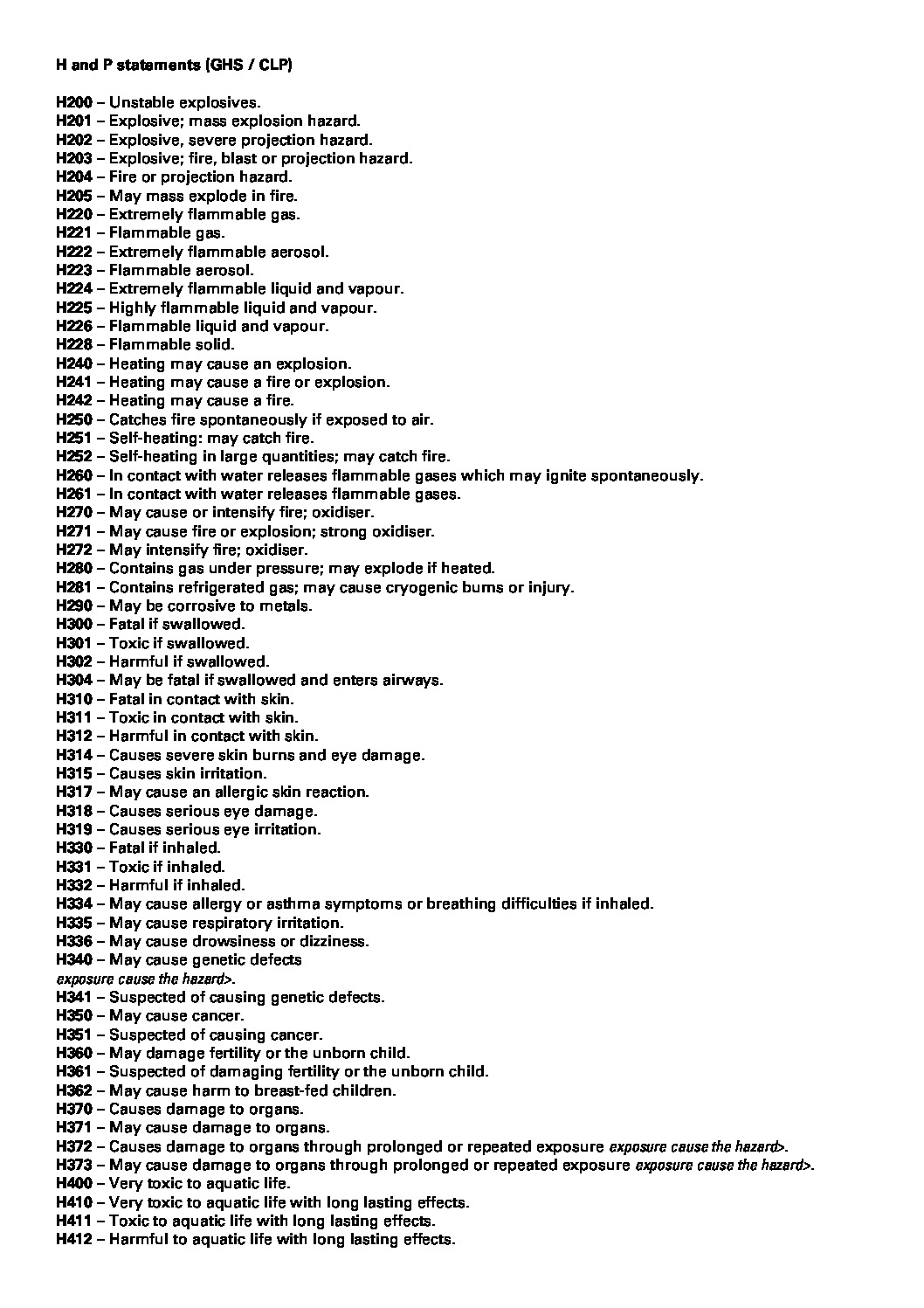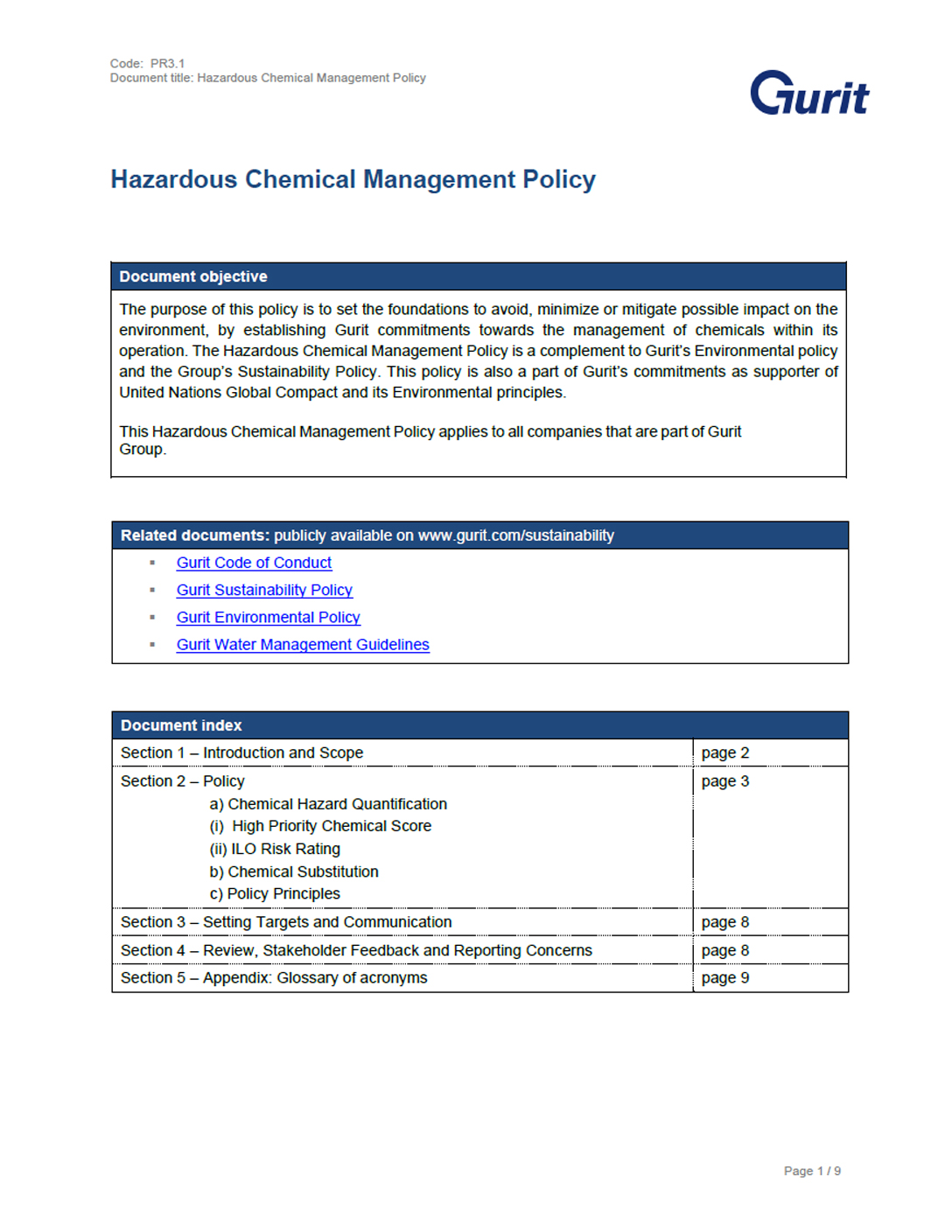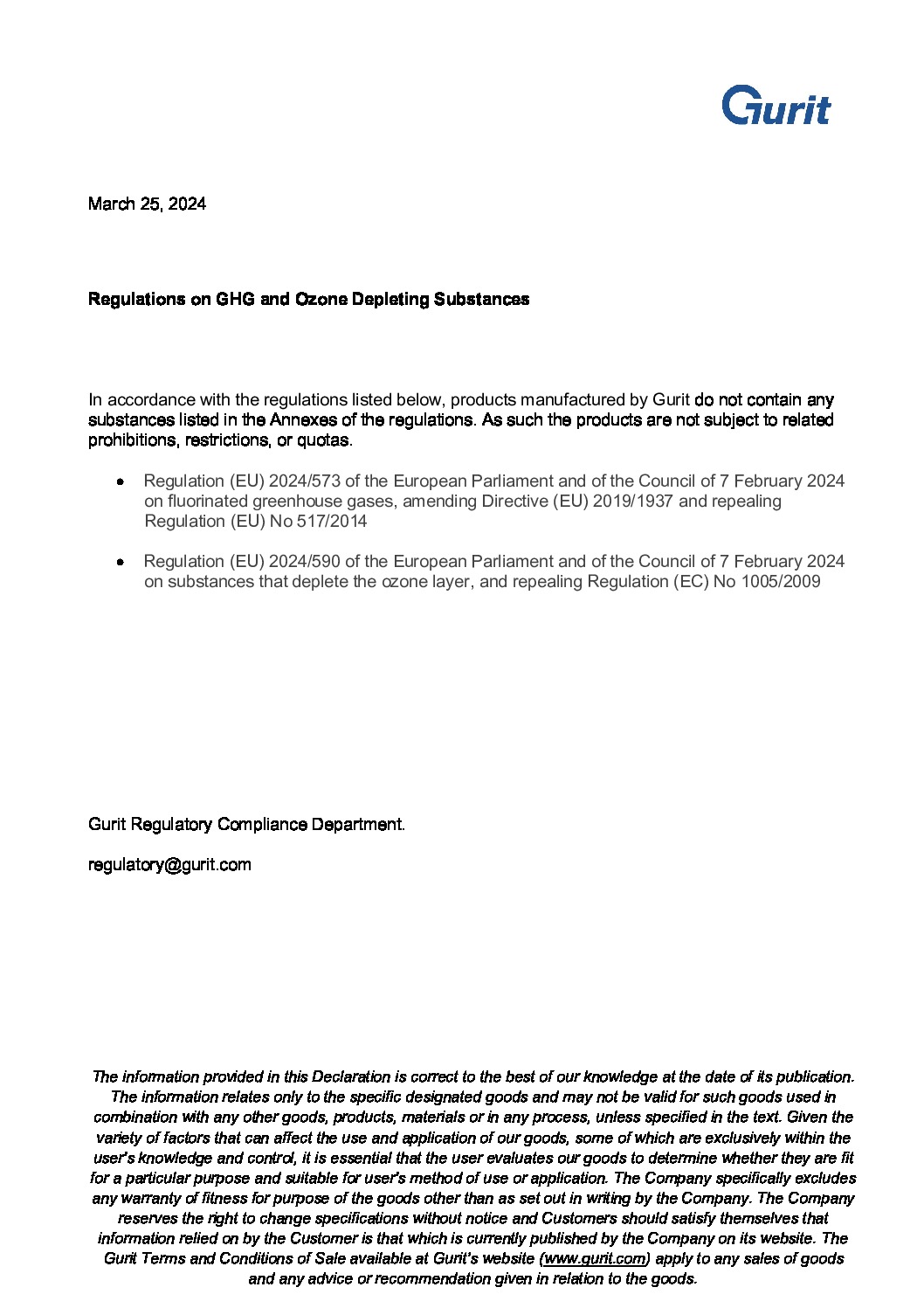Gurit Hazardous Chemical Management Policy
1. Introduction
Gurit Materials Business Unit produces many product types varying from formulated laminating systems, adhesives and core materials to pre-pregs. As a result many different chemicals are used which form the basis of our products. As the chemical constituents vary greatly so do the hazards associated with them. As well as performance of our products Gurit understands the need to identify and manage the risks to human health and the environment that form part of the characteristics of the chemicals and products we use and manufacture.
Many legal requirements have been introduced into international legislation over the years to protect people and the environment from the potential adverse effects of exposure to hazardous chemicals. However, while significant reductions in pollution from major industrial sources have been made, basic information on the public health and environmental hazards of many chemicals placed on the market for use in manufacturing processes and in everyday products is still lacking. Moreover, advances in analytical technology have shown that many of these chemicals are widespread in the environment and can also be found in human tissues. These factors have contributed to heightened societal concern about chemicals and doubts about the effectiveness of the regulatory systems to anticipate and prevent unacceptable human health and environmental impacts. This has led to developments in governmental chemicals policy ranging from EU Registration, Evaluation and Authorisation of Chemicals Regulation (REACH), US TSCA and China’s Decree 591; Regulations on Safe Management of Hazardous Chemicals in China to name a few. The development of such regulations to control the most harmful chemicals coupled with the advent of GHS (Globally Harmonised System) which has or is in the process of being adopted by the majority of UN countries means that there is greater harmonisation of the classification and communication of hazardous chemicals. The combination of increased identification, communication and control has meant that all users of chemicals have better access to chemical hazard information and potential restrictions around chemical usage, ultimately allowing for better management of the risks.
2. Chemical Substitution
ISO 18001:2007 encompasses the concept of risk reduction and in common with good practice the substitution of hazardous chemicals with less hazardous equivalents is desirable. Before considering the substitution of an existing chemical we must ensure that any replacement fits with the manufacturing process and ensure that any changes do not affect any current certifications or qualifications currently held on the product. Consequently, it is not always feasible to substitute chemicals in many existing products and even if it is possible the cost of making such changes may be prohibitive. As a result, substitution or elimination of hazardous chemicals in formulations tends to be focused on new product development activities.
3. Policy
Whilst Gurit recognises that hazardous chemicals must be used in order to produce quality products we also understand that these must be used with knowledge of the risk they present to human health and the environment. It is expected with the continual growth of available hazard data due to regulations such as REACH that the number of chemicals identified as requiring legislative restrictions will increase. The tracking of such factors within Gurit means that the increase in harmful chemicals can be managed effectively and maintained at a practicable level.
The hazardous chemicals management policy is driven by four principle ideas that we believe help to ensure that the products we produce or use minimise adverse effects to human health and the environment.
- Chemical Substitution
- Hazard assessment and communication
- Supply chain management
- Sustainable chemistry
1) Assess and avoid “High Priority Chemical”:
We have adopted a chemicals management approach whereby we aim to either eliminate or minimise exposure when hazards cannot be prevented. To that end, we:
-
- Identify “high priority chemicals” that we currently use.
- Actively assess the feasibility of using alternative, less hazardous chemicals.
- Focus on the development phase of new products to identify when and where these less hazardous chemicals may be used.
- Develop projects designed to eliminate or substitute “high priority chemicals”.
- Replace “high priority chemicals” in our existing products and manufacturing processes, if this is technically and economically feasible.
- Adopt appropriate and responsible risk management approaches where elimination or substitution is not possible.
- Reporting of key performance indicators relating to substitution and reduction in high priority chemicals.
2) Hazard Assessment and Communication:
A comprehensive understanding of chemical hazards is critical for decision making and the sound management of risks. We therefore:
-
- Use assessment approaches that identify the key environmental and workplace health and safety hazards associated with all our chemicals used.
- Obtain environmental and workplace health and safety information on non-proprietary chemicals from our suppliers.
- Provide relevant stakeholders (e.g. employees, contractors, customers, etc) with chemical hazard information to enable them to adopt appropriate risk management approaches.
- Conduct regular reviews of products and raw materials to identify any opportunity for reformulation to generate a lower hazard product.
3) Supply Chain Management:
We recognise we have a role to play in encouraging responsible management of hazardous chemicals throughout our supply chain and apply consistent standards to our supply chain partners. This is achieved by:
-
- Requiring that our suppliers comply with all legal and regulatory requirements.
- Establishing global environmental, health and safety requirements for key suppliers and where appropriate conduct pre-contract evaluations of potential suppliers.
- Work with suppliers to eliminate ‘’high priority chemicals’’ from raw materials wherever technically feasible.
- Availability of all our Safety Datasheets on request to customers as well as automated sending of updates to customers.
4) Sustainable Chemistry:
We believe that the advancement of “green chemistry” should occur wherever possible. Therefore we work to identify opportunities to adopt sustainable chemical technologies wherever feasible:
-
- Improving process design and efficiency to minimise and reduce associated waste or emissions.
- Exploring opportunities for the use of renewable resources.
- Minimising energy-intensive manufacturing processes.
- Exploring and optimising recycling and reuse opportunities.
The following pages give more information on the various areas of product stewardship and regulatory compliance. Any questions on product stewardship can be sent to: regulatory@gurit.com



